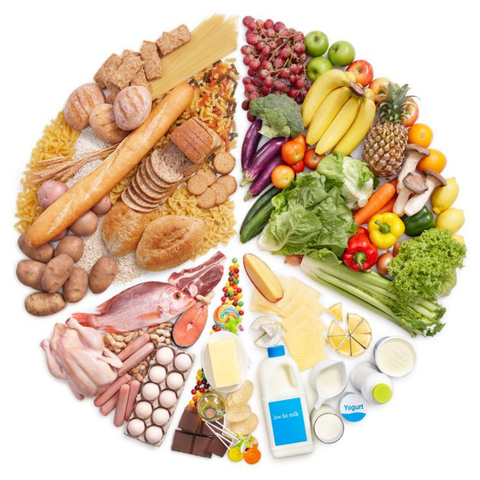
Functional Foods for Everyday Wholesome Nutrition
Functional foods are a category of foods that have some health advantages apart from the usual dietary requirements. All foods supply energy and nutrients, but functional foods go a step further. They help address nutrient deficiencies, lower the risk of certain illnesses, and contribute to growth and development.
The term ‘functional foods’ was initially documented in Japanese literature in the late 1980s. It has since spread across the world and is now a commonly accepted term in India as well. These foods are divided into two types: natural (rich in nutrients) and fortified (with added nutrients).
What Are Functional Foods?
Functional foods either occur naturally or are fortified with specific nutrients to increase their health value. Fortification adds nutrients not originally present in a food, while enrichment replaces nutrients lost during production.
For example:
- Oats contain beta-glucan, a type of fiber that lowers cholesterol.
- Fortified orange juice with calcium supports bone health.
- Functional foods also include probiotics, plant compounds, and omega-3 fatty acids, which benefit overall health.
Types of Functional Foods
Functional foods can be broadly categorized into natural and fortified types.
1. Natural Functional Foods
These are foods naturally rich in nutrients and beneficial compounds. Some examples include:
- Fruits: Mango, guava, bananas, pomegranates, and citrus fruits.
- Vegetables: Spinach, broccoli, carrots, okra, and sweet potatoes.
- Legumes: Chickpeas, lentils, kidney beans, and black-eyed peas.
- Nuts and Seeds: Almonds, cashews, flaxseeds, and sesame seeds.
- Whole Grains: Ragi, Jowar, Brown rice, and oats.
- Spices and Herbs: Turmeric, cinnamon, ginger, garlic, and cumin.
- Fermented Foods: Yogurt (curd or dahi), buttermilk (chaas), pickles, and idli/dosa batter.
- Seafood: Sardines, mackerel, and prawns, rich in omega-3 fatty acids.
- Beverages: Green tea, black tea, and traditional herbal drinks like kadha.
2. Fortified Functional Foods
These foods have added nutrients to increase their health benefits:
- Fortified milk: Enriched with vitamin D and calcium.
- Fortified cereals: Contains added iron, folic acid, and other vitamins.
- Fortified edible oils: With added vitamins A and D.
- Salt: Iodized salt to prevent iodine deficiency.
- Fortified flour: Whole wheat flour with added iron and folic acid.
Health Benefits
1. Prevent Nutrient Deficiencies
India faces challenges like anemia due to iron deficiency and low vitamin D levels. Foods such as fortified flour, milk, and salt help address these problems. For instance, iodized salt has been instrumental in reducing iodine-related disorders.
2. Reduces Risk of Chronic Diseases
Foods rich in antioxidants, omega-3 fatty acids, and fiber help control conditions such as diabetes, heart disease, and hypertension. Whole grains like oats and bajra support blood sugar control, while omega-3-rich fish benefits heart health.
3. Builds Immunity
With seasonal infections and communicable diseases being common, foods like turmeric, ginger, garlic, and yogurt enhance immune function.
4. Helps Growth and Development
For children and pregnant women, foods enriched with nutrients such as iron, calcium, and folic acid contribute to healthy growth. Fortified cereals and milk are good sources of these nutrients.
Ways to Include Functional Foods
Functional foods into your daily meals can be simple:
- Start your day with fortified cereals or whole grains like oats or ragi porridge.
- Use fermented foods such as idli, dosa, or curd in meals.
- Prepare dishes with vegetables like spinach or carrots.
- Snack on nuts and seeds such as almonds or flaxseeds.
- Choose beverages like turmeric milk (haldi doodh) or green tea.
- Use fortified products like iodized salt and fortified oils.
Balance it Out
While functional foods have many benefits, balance is essential. A diet with a variety of natural, whole foods provides nutrients your body needs without excessive dependence on fortified items.
How to Choose Functional Foods
When you buy functional foods, check the Nutrition Facts label to see the nutrients they offer and their percentage of the recommended daily intake. For fortified foods, consider how the added nutrients match your dietary needs. If you want to raise your intake of specific nutrients, consult a healthcare provider to know your daily requirements.
Nutrient-Rich Everyday Foods
The World Health Organization (WHO) estimates that nearly 2 billion people worldwide face micronutrient deficiencies, often called "hidden hunger." In India, this challenge is partly addressed through fortified foods like iodized salt, which reduced iodine deficiency disorders by over 90% – a clear example of the potential of fortified foods to improve public health.
Food connects deeply to both culture and health. Traditional staples such as lentils, turmeric, and green vegetables supply essential nutrients, while fortified products like iron-rich flour, vitamin D milk, iodized salt, and cereals with added folic acid address specific deficiencies. For example, iron-rich flour reduces anemia, which affects more than half of women and children, and vitamin D milk strengthens bones in regions with limited sunlight. Folic acid fortification prevents congenital disabilities and helps healthier pregnancies.
Research shows that diets including whole grains, nuts, and omega-3 fats can cut the risk of heart disease by up to 30%. Fortified rice helps combat vitamin A deficiency, a leading cause of preventable blindness, while oils enriched with vitamins A and D improve immune function and bone health.
Nutri Intact brings you the best of nature with our rich and exotic selection of nuts, spices, edible oils, and more. We preserve nature's goodness so you can enjoy wholesome food in your everyday meals. The best way to appreciate our quality is to try it for yourself. Enjoy the earthy aroma while cooking, feel the improvements in your gut health, and experience the balance that true soul food provides.
We are proud to be an FSSAI-licensed brand (Lic. No: 11224333002597).




